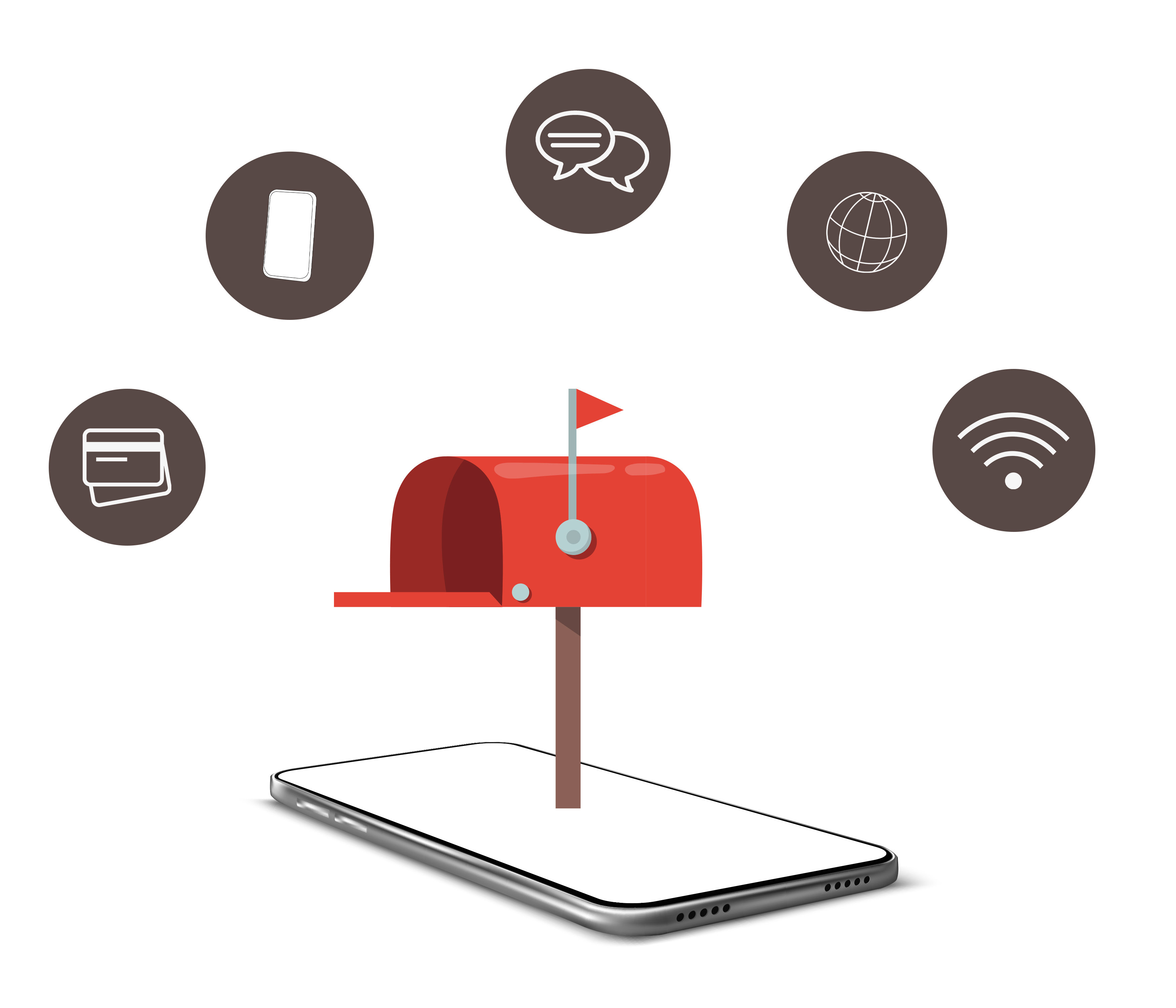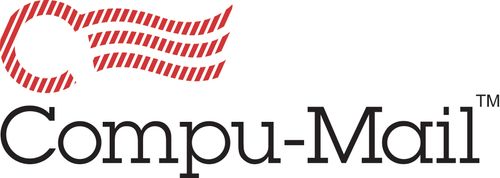Direct mail marketing is a form of advertising where businesses send promotional materials directly to potential customers through the postal service. These materials can include postcards, letters, brochures, catalogs, or samples. Direct mail offers tangible, physical touchpoints that can leave a lasting impression on recipients, fostering brand recognition and trust.
To succeed in direct mail marketing, businesses should focus on crafting compelling, personalized content that resonates with their target audience. They can also utilize data analytics to track the effectiveness of their campaigns and make data-driven decisions for optimization.
Furthermore, each type of direct mail marketing serves different purposes and can be tailored to suit the specific goals of a marketing campaign. Overall, direct mail marketing remains a valuable tool, offering unique benefits and opportunities for connecting with customers.
What is Direct Marketing?

Direct marketing has become an essential component of any marketing strategy. It refers to marketing that involves businesses directly communicating with their target customers to promote their products or services. Direct marketing can take many forms, including personalized emails, telemarketing, direct mail, and SMS marketing. Each example allows businesses to reach out to specific customers with customized messages and offers, making communication more personal and practical.
Unlike indirect marketing, which aims to create brand awareness through advertising and other promotional methods, direct marketing focuses on generating leads and increasing sales through personalized and targeted messaging.
Direct Marketing Vs. Indirect Marketing
Direct marketing and indirect marketing are two different approaches to promoting products or services to customers. To understand how indirect marketing differs from direct marketing. Let’s look at the table:
| Direct Marketing | Indirect Marketing |
|---|---|
| Direct communication with the customer through email, direct mail, or phone calls | Communicating with customers through channels such as social media, content marketing, and SEO |
| Usually involves a specific call-to-action (e.g. buy now, sign up today) | May not have a clear call-to-action, but instead aims to build brand awareness and interest |
| Can be targeted to a specific audience based on demographics, location, and past behavior | Generally reaches a wider audience without specific targeting |
| Results are often more measurable and can be tracked through metrics such as response rates and conversion rates | Results may be less immediate and harder to track |
| Can be more expensive due to the cost of materials and postage for direct mail campaigns | Can be less expensive as it often relies on owned media or organic social media reach |
| Examples include direct mail, telemarketing, and email marketing | Examples include social media marketing, content marketing, and search engine optimization |
What is the goal of direct marketing?
The ultimate goal of direct marketing is to encourage potential customers to take a specific action, such as making a purchase or signing up for a service. This can be achieved through various methods, including email marketing, direct mail, telemarketing, and SMS marketing.
Direct marketing campaigns often include a clear call-to-action, such as “buy now” or “sign up today,” that prompts the recipient to take action immediately. By providing a direct response mechanism, businesses can measure the effectiveness of their direct marketing campaigns and adjust their direct marketing strategies accordingly.
Types of Direct Advertising
Direct marketing can take many forms, but four main types are commonly used by businesses to communicate with their target audience.
- Email Marketing: Email marketing involves sending personalized emails to a list of subscribers to promote a product or service. This type of direct marketing is cost-effective, allowing businesses to reach a large audience with targeted messaging.
- Telemarketing: Telemarketing involves contacting potential customers over the phone to sell products or services. This method of direct marketing allows businesses to have a personal conversation with potential customers and address any questions or concerns they may have.
- Direct Mail Marketing: Direct mail marketing involves sending physical mail to potential customers, such as postcards or letters. This type of direct marketing can be highly targeted, allowing businesses to reach specific audiences with customized messaging.
- SMS Marketing: SMS marketing involves sending text messages to a list of subscribers with promotional offers or updates. This type of direct marketing is particularly effective for businesses looking to reach a younger audience, as text messaging is a primary mode of communication for many people.
Benefits of Direct Marketing
Direct marketing offers several benefits for businesses, including:
- Targeted Messaging: Direct marketing allows businesses to reach a specific audience with customized messaging. This personalized approach can increase the likelihood of a response from potential customers.
- Measurable Results: Direct marketing campaigns often include a clear call-to-action, allowing businesses to track and measure their effectiveness. This helps businesses to refine their strategies and optimize their return on investment.
- Cost-Effective: Direct marketing can be cost-effective compared to other forms of marketing, as it allows businesses to target specific audiences and minimize waste.
- Increased Sales: Businesses can generate leads and increase sales more efficiently than indirect marketing by targeting potential customers directly.
- Improved Customer Relationships: Direct marketing can help businesses build stronger customer relationships by providing personalized messaging and offers that meet their needs.
- Flexibility: Direct marketing can be customized to suit a range of budgets, target audiences, and business objectives, making it a versatile marketing tool for businesses of all sizes.
How to Build a Long-Term Direct Marketing Strategy?
Direct marketing is a powerful tool that businesses use to engage with customers and promote their products or services. While short-term direct marketing campaigns can deliver quick results, a long-term direct marketing strategy can sustain your business’s success. Let’s discuss how direct mail marketing works.

Build a Strong Brand
A strong brand is the foundation of any successful marketing strategy. Your brand should communicate your values, personality, and unique selling proposition. Use consistent branding across all your marketing channels to create a cohesive brand experience for your customers. This will help build brand recognition and trust, essential for a successful long-term direct marketing strategy.
Develop a Customer Database
Develop a customer database to store customer information such as names, addresses, and contact details. Use this database to segment your customers based on their interests, preferences, and behavior. This will help you create more personalized and targeted marketing campaigns. By tailoring your marketing messages to specific segments of your customer base, you can increase engagement and build stronger relationships with your customers.
Offer Value-Added Content
Offer value-added content to your customers, such as educational resources, tips, and advice. This can position your brand as an expert in your industry and create a positive impression on your customers. By providing helpful and informative content, you can build trust with your customers and establish your brand as a reliable source of information.
Use Multiple Channels
Use multiple channels to communicate with your customers, such as email, social media, direct mail, and mobile. This will help you reach your customers where they are most active and create a consistent brand experience across all channels. Using multiple channels, you can increase the frequency and variety of your marketing messages, which helps keep your brand top of mind for your customers.
Build a Loyalty Program
Building a loyalty program can help incentivize your customers to continue doing business with you. Offer exclusive discounts, rewards, and special offers to your loyal customers to keep them engaged and motivated. By providing additional value to your loyal customers, you can increase customer retention and build a stronger customer base.
Continuously Refine Your Strategy
Continuously refine your strategy by analyzing your data and metrics. Use A/B testing to test different messaging, offers, and formats to determine what resonates with your customers. By continuously refining your strategy, you can stay ahead of trends and changes in your industry, and continue to provide relevant and effective marketing messages to your customers.
Foster a Customer-Centric Culture
Foster a customer-centric culture within your organization by prioritizing customer service and feedback. Make sure your team is trained to handle customer inquiries and complaints in a professional and empathetic manner. By putting the customer first, you can build stronger relationships with your customers and create a culture of loyalty and advocacy.
Measure Your ROI
To determine the effectiveness of your long-term direct marketing strategy, you need to measure your ROI. Use analytics tools to track key metrics such as customer retention, customer lifetime value, and revenue generated from direct marketing campaigns. By measuring your ROI, you can identify areas for improvement and make data-driven decisions to optimize your marketing strategy.
How to Refine Your Direct Mail Strategy Post-COVID?

The COVID-19 pandemic has significantly impacted businesses worldwide, and the marketing landscape has also undergone a significant transformation. With changing consumer behavior and safety concerns, refining your direct mail strategy, post-COVID is essential for long-term success. Let’s explore some direct marketing tips and strategies to help you refine your direct mail strategy post-COVID for long-term success.
Reassess Your Target Audience
The first step in refining your direct mail strategy post-COVID for long-term success is to reassess your target audience. With the pandemic changing consumer behavior and preferences, it’s vital to understand their needs and adjust your messaging accordingly. Consider conducting market research and analyzing your customer data to understand your audience better and tailor your direct mail campaigns accordingly.
At Compu-Mail, we provide access to demographic and behavioral data, allowing businesses to identify and target the most relevant audience for direct mail marketing campaigns.
Focus on Personalization
Personalization has been a critical element of successful direct mail campaigns and is even more crucial post-COVID. With consumers seeking a more personalized experience, incorporating personalization in your direct mail strategy can help you stand out in a crowded mailbox.
With Compu-Mail’s unique strategies, we help you create unique messaging for each recipient based on their interests, behavior, or location. We also use customer data to personalize your messaging, offers, and even the design of your mail pieces.
Incorporate Safety and Hygiene Measures
Safety and hygiene have become a top priority for consumers post-COVID, and it’s essential to incorporate these measures into your direct mail strategy. Consider using materials that are easy to clean and disinfect, such as laminated or coated paper. Additionally, include messaging in your mail pieces that reassure customers about your safety and hygiene measures.
Integrate with Digital Channels
Incorporating digital channels into your direct mail strategy can help you reach a broader audience and drive long-term success. Use direct mail to drive traffic to your website, social media platforms, and other digital channels. Consider incorporating QR codes or other digital elements in your mail pieces to create a seamless omnichannel experience.
Test and Refine Your Strategy
Testing and refining your direct mail strategy post-COVID is crucial for long-term success. Experiment with different formats, messaging, and offers to see what resonates best with your target audience.
If you are willing to use A/B testing to compare different versions of your mail pieces and optimize your campaigns accordingly. Connect with us! We help our clients with mail tracking and reporting tools to allow you to measure the effectiveness of your direct mail campaign, providing insights that can be used to refine strategies related to future of direct mail.
Direct mail marketing can be a highly effective way to reach potential customers and generate leads. At Compu-Mail, we specialize in services such as targeted mailing lists, variable data printing for personalization, and expertise in incorporating safety measures into your mail pieces. We can also assist with integrating your direct mail campaigns with digital channels, such as email and social media, for a more comprehensive marketing approach. With our testing and analytics capabilities, Compu-Mail can help you optimize your direct mail strategy to maximize effectiveness and drive long-term success.
Our expert direct marketing tips and tricks will help you take your campaigns to the next level and achieve maximum results. Don’t miss this opportunity to elevate your direct mail marketing game and see a significant return on investment.
Frequently Asked Questions
Q: What is telemarketing direct mail?
A: Telemarketing direct mail is a marketing strategy that combines traditional direct mail with follow-up telephone calls. After sending promotional materials via mail, businesses make phone calls to recipients to further engage with them, answer questions, and encourage action. This approach aims to increase response rates and drive conversions by providing a personalized touchpoint through both mail and phone communication.
Q: Why is direct marketing more effective than indirect?
A: Direct marketing is more effective than indirect marketing because it allows businesses to target specific audiences with personalized messages, resulting in higher engagement and conversion rates. By directly reaching out to potential customers through channels like email, direct mail, or social media, businesses can establish a more immediate and impactful connection, leading to better results in terms of sales and ROI.
Q: How does direct marketing help a business?
A: Direct marketing helps a business by allowing it to target specific audiences with personalized messages, leading to increased engagement and higher conversion rates. It also enables businesses to track the effectiveness of their campaigns, leading to better-informed marketing decisions and improved return on investment (ROI).





